|
Hsinchu is not only Taiwan's technological hub, but is also rich with historical sights, Hakka culture, and natural beauty. It has numerous old streets, preserved Japanese-era and Qing-era buildings, zoos, mountains, lakes, rivers, beaches, and much more to explore. It is definitely worth a stop on your next trip to Taiwan.
History of Hsinchu: After the settlement of the area by Han Chinese farmers in about 1711, what was then known as Zhuqianshe became the most important economic area in northern Taiwan. By 1723, a walled city was built here out of bamboo, because brick walls were forbidden for fear of a revolt against the Qing authorities. The name Zhuqiancheng (竹塹城) literally means bamboo moat city. The bamboo-walled city had four gates and its perimeter was about 1.4 KM long. In 1806, the city was upgraded with earthen walls. In 1828, the city walls and gates were finally made into brick, with the perimeter covering 2.7 KM, and walls 5 meters high, the center of the city being the Chenghuang City God Temple. In 1901, the Japanese government decided to redesign the City of Hsinchu and destroyed all the gates and walls except the existing East Gate. In the ROC era, the Hsinchu Science Park was established in 1980 under President Chiang Jingkuo, and was made to model silicon valley. TSMC, Taiwan's most important corporation, was formed in 1987 with its headquarters in the park and created a technological hub, making Hsinchu indispensable to Taiwan's economy. When to visit: It is best to visit from April to November when the weather is warm and less windy. There is a constant, cold northeasterly wind from December to March especially along the coast. However, the winter in general is more dry. Where to stay: Most of the accommodation you will find is near the city center. If you will only visit downtown, you can consider a day trip from Taipei. We have stayed at and recommend the Golden Motel a high quality motel near Green Grass Lake (you can book on Agoda here, Booking.com here, Hotels.com here, Expedia here, or Trip.com here), and CD Motel, another high quality motel in downtown Hsinchu (you can book on Agoda here, Booking.com here, or Trip.com here). Unfortunately I cannot recommend any further hotels that I have stayed at in Hsinchu because usually we stay at my wife's uncle's house. You can find out where to stay in our Taiwan hotels guide or search for the best hotel deals in Taiwan here. You can also book Wifi and SIM cards for Taiwan on Gigago here. Need travel insurance? Compare prices on Insubuy here. How get to Hsinchu? You can book tickets to travel to Hsinchu via inter-city bus on Klook here. You can book tickets to Hsinchu via high speed rail (HSR) on Klook here or KKDay here. Book tickets via the normal train (TRA) on Klook here. How to get around in Hsinchu: As always, we recommend renting a scooter as the best way to see Taiwan. However, you can also a great deal of Hsinchu by taking the train, inter-city bus, or local bus. Getting around in a car is also a convenient option as there is plenty of parking pretty much everywhere in this less crowded county. Scooter Rental: Looking for scooter rental in Hsinchu? You can search Klook here or KKday here to look for options. You can also check out our scooter rental guide here. Car Rental: If you are looking for car rentals in Hsinchu, you can also search Qeeq here, Klook here, or KKDay here. You can also check out our car rental guide here. By Bicycle: Cycling is the best way to enjoy Taiwan's landscapes if you have the time and energy. Looking for bicycle rentals in Taiwan? You can search on KKday here and Klook here. You can also check out our Taiwan cycling guide here. Tours: You can find more tours and activities in Hsinchu such as You can find more tours and activities in Hsinchu such as river tracing, wild hot springs, white water kayaking, backpack rafting, Little Ding Dong Theme Park, Leofoo Village Theme Park, Window on China Theme Park, glamping, camping, stone spa, horse riding, Yukids Island, Tom and Bei Bei Parent Child Paradise, bee keeping experience, cycling, dried persimmons experience, Jump Wave Trampoline Park and more on Klook here or KKday here. Just to let you know, if you book using the links above, we get some commission at no cost to you, and you can help support our blog. You can click here to receive $5 USD on your first Klook purchase. Map: See below for a map of places we will cover in this blog:
0 Comments
For you expats or foreigners who have never left Taipei, Changhua is a large mostly rural county in central Taiwan. For years I myself never visited, because I didn't know what was there and had no reason to go. It turns out there are quite a few attractions here in this secret paradise.
Below I will list some of the best places in Changhua that I have visited. I will be sure to update this blog as I visit more places later. Historical Background: Before Han settlement, Changhua was inhabited by native peoples. During the Dutch era in Taiwan, a well was made to tap into the Zhuokou River water table. The Red Hair Well was made around 1611 by Dutch colonizers and was often used by Dutch soldiers and missionaries, During the Qing Dynasty, the city of Lukang became an important trading port, because of the depth of the water and the fact that it was closer to Fujian province than other cities in Taiwan. The main product shipped to Fujian was rice. In the 1800s, Lukang was Taiwan's second largest city, with as many as 20,000 residents, even more than Banka (modern day Taipei) and second only to Tainan. Later on, the port began to silt in, and the railroad bypassed the city, meaning that economic activity here went downhill. However because the city has changed so little in the past 200 years, it has become a cultural relic preserved from the past. The city also has over 200 temples. After the railroad was moved to Changhua City, it became the most important economic region in the county. Despite being the smallest county in Taiwan by area, Changhua County is the most populous county in Taiwan. It is often described as being part of the Taichung-Changhua metropolitan area. How to get around in Changhua? As always, we recommend renting a scooter as the best way to see Taiwan. However, you can also a great deal of Changhua by taking the train, inter-city bus, or local bus. Getting around in a car is also a convenient option as there is plenty of parking pretty much everywhere in this less crowded county. By Scooter: Looking for scooter rental in Changhua? Check out Klook here or KKday here to search for options. You can also check out our scooter rental guide here. By Car: If you are looking for car rentals, you can also search Qeeq here, Klook here, or KKday here. You can also check out our car rental guide here. By Bus/Train: You can book tickets to travel to Changhua via inter-city bus on Klook here. You can book tickets to Changhua via high speed rail (HSR) on Klook here or KKDay here. Book tickets via the normal train (TRA) on Klook here. By Bicycle: Cycling is the best way to enjoy Taiwan's landscapes if you have the time and energy. Looking for bicycle rentals in Taiwan? You can search on KKday here and search for tours on Klook here. You can also check out our Taiwan cycling guide here. Accommodation: We have stayed at and recommend Guide Hotel Changhua Jhongjheng, which is one of our favorite hotels in all of Taiwan, with great quality and service right in downtown Changhua. (book on Agoda here, Booking.com here, Hotels.com here, Expedia here, or Trip.com here) Looking for a hotel? We recommend booking through Agoda here, which provides the best quality selection of accommodation on the islands. Find out where to stay in our Taiwan hotels guide or search for the best hotel deals in Taiwan here. You can also book Wifi and SIM cards for Taiwan on Gigago here. Need travel insurance? Compare prices on Insubuy here. Tours: Tours and activities in Changhua include Magical Mushrooms Leisure Farm, Cheng Mei Cultural Park, Changhua Love Farm, Gushengwu Paleontology Park, Taiwan You Good School of Cookie, Baiguoshan Amusement Park, Yunhe Starry Sky View Restaruant , Tianzhong, Yakuta Experience , Qingshui Hot Spring Glamping, Fruit Picking , Tonight Star Leisure Farm, Tianweiwang Scenic Spot, and more. You can find more tours of Changhua on Klook here or KKday here. Just to let you know, if you book using the links above, we get some commission at no cost to you, and you can help support our blog. You can click here to receive $5 USD on your first Klook purchase. Map: You can see a map of all the places that we will visit in this blog below:
Ligang Old Street is a historical small town in rural Pingtung dating back to the Qing Dynasty. At one time it even had a city wall built around it. Here you can find historical buildings are religious sites without any other tourists bothering you. There is also a night market and morning wet market to explore. It is definitely worth a visit on your next trip to Pingtung.
Please note this is referring to the old street in Pingtung. For the old street in Changhua, see our blog on Lukang Old Street here. Background: For millennia Pingtung had been inhabited by plains aboriginal groups. Their biggest settlement was called Ahou, on the current site of Pingtung City, and another settlement to the northwest along the Gaoping River was called Aligang, which is where Ligang gets its name. The first Chinese settlers came to the area in the late 1600s during the Kingdom of Tungming and Qing Dynasty. Before that time, the area was known as a place of exile for Chinese criminals. During the Qing Dynasty, the area was part of Fengshan County. During these times there were often fights among local clans such as Hakka, Cantonese, and Min peoples that came from different parts of China. For protection against rebellions, a city wall was built around Ligang, but was later destroyed during the Japanese Era. The Japanese also relocated two villages that were close to the Gaoping River near Ligang Old Street. Currently, the population of Ligang is roughly 25,000 people, a number which has remained constant for nearly 60 years. Normally there are not many people on the old street and the area is not very busy. Hours: Ligang Old Street: 24/7 Ligang Night Market (里港夜市): 5 PM - 10:30 PM Thursday and Sunday evenings Ligang Morning Vegetable Market (里港市場): 8 AM - 12 PM Tuesday - Sunday Price: Free Tours and Activities in Pingtung: There are many activities available in Pingtung, such as snorkeling, diving, SUPing, surfing, submarine riding, and river tracing. You can find more tours of Kenting on Klook here or KKday here. Where to stay: Looking for a hotel? Find out where to stay in our Taiwan hotels guide or search for the best hotel deals in Taiwan here. We recommend booking through Agoda here, which provides the best quality selection of accommodation in Taiwan. I have stayed at many hostels and hotels in Pingtung, and even almost bought a house here. Some places that I have stayed at and can recommend are Nanwan Kiki (book on Agoda here, Booking.com here), a B&B next to Nanwan Bay, Kenting's most popular Beach. There are also a few decent hotels near Kenting Street Night Market like Kenting Star Inn 888 (book on Agoda here, Klook here, or Booking.com here), or Kenting Dajianshan Hotel (book on Agoda here or Booking.com here). You will notice that none of these hotels are five star resorts (I do not come to Kenting to waste my time at a resort, but you can still search Agoda, Booking.com, or Klook here for those) but they are in my opinion the above have the best value for the money. How to get there: By Car/Scooter: Take Provincial Highway 22 East from Kaohsiung to Pingtung until you reach Ligang. From National Highway 3, you can also get off the 391 exit to Jiuru and head north just about 1 KM to Ligang. The Confucius Temple is on Shengli Road in the middle of the city. Looking for scooter rental in Pingtung? Click here or here to search for options. If you are looking for car rentals, you can also search Qeeq here, Klook here, or KKday here. You can also check out our car rental guide here. By Bus: You can reach Ligang from Pingtung Bus 8220 or 8217. You can book tickets to Kaohsiung via high speed rail (HSR) on Klook here or KKDay here, or book tickets via the normal train (TRA) on Klook here. You can book tickets to travel to Pingtung via inter-city bus on Klook here. By Bicycle: Cycling is the best way to enjoy Taiwan's landscapes if you have the time and energy. Looking for bicycle rentals in Taiwan? You can search on KKday here and search for tours on Klook here. You can also check out our Taiwan cycling guide here. Map: Please see below:
Ahou City Gate (aka Aho City Gate, Aho Gate, East Gate, or Chaoyang Gate) is the last remaining gate from the old walled city of Ahou, which is now Pingtung City. It is one of the last remnants of the walls of the city built nearly 200 years ago during the Qing Dynasty. It is definitely worth a stop on your next trip to Pingtung.
Background: For millennia Pingtung had been inhabited by plains aboriginal groups. Their biggest settlement was called Ahou, on the current site of Pingtung City. The first Chinese settlers came to the area in the late 1600s during the Kingdom of Tungming and Qing Dynasty. Before that time, the area was known as a place of exile for Chinese criminals. During the Qing Dynasty, the area was part of Fengshan County. The city walls began construction in 1836 to defend against robbers, revolts, and infighting between groups of local settlers. Originally there were four city gates built. During the Japanese Era, The City of Pingtung underwent urban planning and most of the walls and gates were destroyed as a result. The last remaining gate is the East Gate, officially called the Chaoyang Gate (朝陽門 Gate facing the sun). It now stands near the Pingtung County Stadium. After an earthquake in 2006, the gate began to sag, after which it underwent restoration work. Normally there are not many people near the gate and the area is not very busy. Hours: 24/7 Price: Free Tours and Activities in Pingtung: There are many activities available in Pingtung, such as snorkeling, diving, SUPing, surfing, submarine riding, and river tracing. You can find more tours of Kenting on Klook here or KKday here. Where to stay: Looking for a hotel? Find out where to stay in our Taiwan hotels guide or search for the best hotel deals in Taiwan here. We recommend booking through Agoda here, which provides the best quality selection of accommodation in Taiwan. I have stayed at many hostels and hotels in Pingtung, and even almost bought a house here. Some places that I have stayed at and can recommend are Nanwan Kiki (book on Agoda here, Booking.com here), a B&B next to Nanwan Bay, Kenting's most popular Beach. There are also a few decent hotels near Kenting Street Night Market like Kenting Star Inn 888 (book on Agoda here, Klook here, or Booking.com here), or Kenting Dajianshan Hotel (book on Agoda here or Booking.com here). You will notice that none of these hotels are five star resorts (I do not come to Kenting to waste my time at a resort, but you can still search Agoda, Booking.com, or Klook here for those) but they are in my opinion the above have the best value for the money. How to get there: By Car/Scooter: Take Provincial Highway 1 south to the bottom of Taiwan until it becomes Pingtung City. Ahou Gate is on Zhonghua Road in the middle of the city. Looking for scooter rental in Pingtung? Click here or here to search for options. If you are looking for car rentals, you can also search Qeeq here, Klook here, or KKday here. You can also check out our car rental guide here. By Train: Ahou Gate is about a 10 minute walk from Pingtung TRA Station. You can book tickets to Kaohsiung via high speed rail (HSR) on Klook here or KKDay here, or book tickets via the normal train (TRA) on Klook here. You can book tickets to travel to Pingtung via inter-city bus on Klook here. By Bicycle: Cycling is the best way to enjoy Taiwan's landscapes if you have the time and energy. Looking for bicycle rentals in Taiwan? You can search on KKday here and search for tours on Klook here. You can also check out our Taiwan cycling guide here. Map: Please see below:
Tainan was the capital of Taiwan during the Dutch Rule and Qing Dynasty, a span lasting over 200 years. During the Qing Dynasty earth and stone walls were built around the city, including 14 city gates. Today only four city gates remain, which we will explore in this blog.
Historical Background: The walls of Tainan first started as a brick wall around Fort Provintia in 1652. After the Qing Dynasty took Taiwan, an uprising by 17 year old Zhu Yigui was successful in exiling the provincial government out of Taiwan after heavy taxation and a bad earthquake had left the people destitute. The Qing took back Tainan about a month later and Zhu Yigui was executed. Later a bamboo palisade was built around the City in 1733 to prevent further rebellion. Bamboo walls surrounded the city until about 1788. When the bamboo walls started to decay, the Fujian provincial government decided to make earthen walls around the capital city instead starting in 1788. However by 1867, the earthen walls had crumbled due to heavy rains year after year, and they were repaired for the last time in 1875. During the Japanese era, most of the walls of Tainan were destroyed because the Japanese thought that walls around the city stifled development. The west wall later became what is now Ximen Road. In its prime, there were a total of 14 city gates in the walls. Today, only four gates remain: Dongan Gate (東安門), Ningnan Gate 寧南門, Jingpo Gate 靖波門, and Duiyue Gate 兌悅門. Hours: 24/7 Price: Free How to get to Tainan? You can book tickets to travel to Tainan via inter-city bus on Klook here. You can book tickets to Tainan via high speed rail (HSR) on Klook here or KKDay here. Book tickets via the normal train (TRA) on Klook here. Need travel insurance? Compare prices on Insubuy here. How to get around in Tainan: As always, we recommend renting a scooter as the best way to see Taiwan. However, you can also a great deal of Tainan by taking the train, inter-city bus, local bus, Youbike, or just walking. Getting around in a car is also a convenient option as there is plenty of parking pretty much everywhere in this less crowded county. Scooter Rental: Looking for scooter rental in Tainan? You can search KKday here or Klook here to look for options. You can also check out our scooter rental guide here. Car Rental: If you are looking for car rentals in Tainan, you can also search Klook here or KKDay here. You can also check out our car rental guide here. Where to stay? Most of the accommodation you will find is near the city center. If you only want to visit old Tainan, you can book a hotel near the west part of downtown and consider walking or cycling around the city. We have stayed at and recommend Liho Hotel (you can book on Agoda here, Booking.com here, or Hotels.com here), a quality hotel right next to Chikan Tower, and Famouse Hotel (you can book on Agoda here or Klook here), which is another great hotel also within walking distance of Chikan Tower in old Tainan. You can find out where to stay in our Taiwan hotels guide or search for the best hotel deals in Taiwan here. Need travel insurance? Compare prices on Insubuy here. You can also book Wifi and SIM cards for Taiwan on Gigago here. Tours: You can find more tours and activities in Tainan such as Life Sciences Museum, Zuojhen Fossil Park, National Museum of Prehistory and Archaeology, Tainan Art Museum, Ten Drum Cultural Village, Shuei Jiao She Cultural Park, Great Wall Exhibition, Anping Canal Cruise, and more on Klook here or KKday here. Map: Please see the existing city gates marked with red castle icons below:
Hengchun's old walled city is the best preserved walled city in Taiwan, with all the city gates intact, as well as most of the city wall. The city was built to help contain the native population after the Rover and Mudan incidents. It is definitely a well preserved historical area and worth a trip if you go to Kenting.
Historical Background: Originally the area around Hengchun was goverened by the Qing dynasty under Fengshan County. However after the Rover Incident and Mudan Incident (in which Taiwan indigenous tribes massacred foreign shipwrecked sailors), the Qing decided to take a more assertive role in governing the area and controlling the native populations. The walls of Hengchun were built as a brick wall and four gates in 1879, and after it was built Hengchun County was established, meaning eternal spring, due to the tropical climate in the area. After the Japanese took Taiwan, some of the walls were torn down to make roads. There was also a railway made that went through the south city gate. Many of the city gates lasted until well into the 1900s, but because they were made of wood they rotted and collapsed easily. Now the gates have been mostly restored, and much of the northern and eastern walls remain. Hours: 24/7 Price: Free How to get there: By Car/Scooter: Take provincial highway 1 south to the bottom of Taiwan until it becomes provincial highway 26. After that keep going to Hengchun. Looking for scooter rental in Pingtung? Click here or here to search for options. If you are looking for car rentals, you can also search here. By Bus: Busses leave daily to Kenting from Zuoying HSR station, Kaohsiung Station, and Pingtung. Get off at the Nanwan Beach stop (南灣). You can book tickets to Pingtung via high speed rail (HSR) on Klook here or KKDay here, or book tickets via the normal train (TRA) on Klook here. You can book tickets to travel to Pingtung via inter-city bus on Klook here. By Plane: There are direct shuttle busses to Kenting from Kaohsing's Xiaogang (KHH) Airport. You can book cheap flights to Kinmen on Trip.com or CheapO Air. You can also search for cheap flights in Taiwan on Kiwi here. Accommodation: Looking for a hotel? Find out where to stay in our Taiwan hotels guide or search for the best hotel deals in Taiwan here. We recommend booking through Agoda here, which provides the best quality selection of accommodation in Taiwan. I have stayed at many hostels and hotels in Kenting, and even almost bought a house here. Some places that I have stayed at and can recommend are Nanwan Kiki (book on Agoda here, Booking.com here), a B&B next to Nanwan Bay, Kenting's most popular Beach. There are also a few decent hotels near Kenting Street Night Market like Kenting Star Inn 888 (book on Agoda here, Klook here, Hotels.com here, Expedia here, or Booking.com here), or Kenting Dajianshan Hotel (book on Agoda here, Booking.com here, Hotels.com here, or Expedia here). You will notice that none of these hotels are five star resorts (I do not come to Kenting to waste my time at a resort, but you can still search Agoda, Booking.com, Hotels.com, or Expedia for those) but they are in my opinion the above have the best value for the money. You can also book Wifi and SIM cards for Taiwan on Gigago here. Need travel insurance? Compare prices on Insubuy here. Tours and Activities in Kenting: There are many activities available such as snorkeling, diving, SUPing, surfing, submarine riding, and river tracing. You can find more tours of Kenting on Klook here or KKday here. Just to let you know, if you book using the links above, we get some commission at no cost to you, and you can help support our blog. You can click here to receive $5 USD on your first Klook purchase. Map: Please see the existing city gates marked with red castle icons below:
The City Gates of Taipei are some of the most iconic landmarks in the city. Originally, five gates and a city wall were built here in the Qing Dynasty. Now only four gates remain, and only the North Gate remains in its original form. Now the city gates are popular landmarks, and you can also learn more about the old city walls and the history of the city at the Taipei Discovery Center in Taipei City Hall.
Historical Background: Taipei's city walls were originally planned for construction in 1879, soon after Taipeh Prefecture was established under the Qing Dynasty. However, it was found that the soil was too soft to support the enormous weight of the stone gates and walls, therefore construction was delayed until more stable ground was found to build the walls. The walls were finally completed in 1884. The length of the wall was 5 KM and included five gates: the East Gate (Jingfumen 景福門), West Gate (Baochengmen 寶成門), South Gate (Lizhengmen 麗正門), Auxiliary South Gate (Zhongximen重熙門), and North Gate (Chengenmen 承恩門). During the Japanese era in Taiwan, in 1904 the walls of Taipei were destroyed after less than 30 years, and Taipei was re-planned into the capital of Taiwan. After the ROC took control of Taiwan, the government rebuilt the East, South and Auxiliary South Gates. Only the North Gate has kept its original appearance from the Qing Dynasty. From 1976 to 2016, Taipei's north gate was partially covered by an overpass. Originally during the construction of the Zhongxiao Overpass, the North Gate was planned for demolition. However after the protest of scholars, the North Gate was preserved. After the Zhongxiao overpass was demolished in 2016, a small park was erected near the north gate to commemorate this historical edifice. Hours: City Gates: 24/7 The Discover Center of Taipei is open from Tuesday to Sunday every week, from 9 AM to 5 PM, Price: Free Tours: You can also join the Classic Taipei Landmarks Day Tour on TripAdvisor here. You can also search for tours on Klook here, or KKday here. Hotels in Taipei: We have stayed at and recommend Ximending Amba, which is within walking distance of Ximending shopping district (book on Booking.com here, Hotels.com here, Tripadvisor here, Expedia here, Kayak here, Trip.com here, or Agoda here). We also have stayed at and recommend and Fu Chang Hotel in Ximending, which is within walking distance of Ximending shopping district (book on Booking.com here, Tripadvisor here, or Agoda here). We also have stayed at and recommend the Yuanshan Grand Hotel, once the tallest building in Taiwan and still the most grand (book on Booking.com here, Tripadvisor here, or Agoda here). Looking for a hotel? We recommend booking through Booking.com here, which provides the best quality selection of accommodation in Taiwan. Find out where to stay in our Taiwan hotels guide or search for the best hotel deals in Taiwan here. Just to let you know, if you book using the links above, we get some commission at no cost to you, and you can help support our blog. Some of the Klook links may not work if you are using an Ad blocker. You can click here to receive $5 USD on your first Klook purchase. How to get there: By MRT: I recommend the MRT system or Ubike, or walking. You can walk to all the gates in about two hours or so. The Discover Center of Taipei can be reached by Taipei City Hall station. You can purchase a discount easy card to use on the MRT from Klook here or KKday here. You can also book an MRT travel pass on Klook here. By Car Scooter: You can try to visit by car or scooter but there is really nowhere to park or stop along the side of the road. Looking for scooter rental in Taipei? You can search on Klook here or KKday here to search for options. You can also check out our scooter rental guide here. If you are looking for car rentals, you can also search Qeeq here, Klook here, or KKday here. You can also check out our car rental guide here. By Bicycle: Cycling is the best way to enjoy Taiwan's landscapes if you have the time and energy. Looking for bicycle rentals in Taiwan? You can use Taiwan's many Youbike sharing stations, or search for rentals on KKday here, and search for tours on Klook here. You can also check out our Taiwan cycling guide here. You can also book a Sunset Riverside Bike Ride and Historical Tour, 4 Hour Cycling in Taipei, Ultimate 8-Hour Cycling City Tour, or Taipei City Bike Tour with Night Market Experience on TripAdvisor here. For more information, check out our Taiwan transportation guide here. Map: Please see a map of the locations covered in this blog below:
Hsinchu City God Temple, or Chenghuang Temple, dates back to the Kingdom of Tungming and was built in the middle of the old bamboo-walled city of Zhuqian. Currently, it is the religious center of the city and also has its own night market. It is one of the most impressive historical sites in Hsinchu and is worth a visit for anyone in the area.
Background: After the settlement of the area by Han Chinese farmers in about 1711 during the Kingdom of Tungming, what was then known as Zhuqianshe became the most important economic area in northern Taiwan. By 1723, a walled city was built here out of bamboo, because brick walls were forbidden for fear of a revolt against the Qing authorities. The name Zhuqiancheng (竹塹城) literally means bamboo moat city. The bamboo-walled city had four gates and its perimeter was about 1.4 KM long. In 1806, the city was upgraded with earthen walls. In 1748, the Chenghuang City God temple was completed, being built in the center of the city. The temple was refurbished and restored in 1792, 1799, and 1924. In 1891, the Guangxu Emporer visited Taiwan and held a prayer meeting here. He left a plaque that still stands today which reads "Golden Gate Protection (金門保障)," which is meant that the temple would provide protection to the entire island of Taiwan. The temple also features six different halls. Parades and activities are held regularly at the temple. There is also a night market that surrounds the temple known as the Chenghuang Temple Night Market (新竹市城隍廟夜市). Hours: 24/7, but I recommend visiting at night when the night market is open. Price: Free Tours: You can find more tours and activities in Hsinchu such as You can find more tours and activities in Hsinchu such as river tracing, wild hot springs, white water kayaking, backpack rafting, Little Ding Dong Theme Park, Leofoo Village Theme Park, Window on China Theme Park, glamping, camping, stone spa, horse riding, Yukids Island, Tom and Bei Bei Parent Child Paradise, bee keeping experience, cycling, dried persimmons experience, Jump Wave Trampoline Park and more on Klook here or KKday here. Where to stay: Most of the accommodation you will find is near the city center. If you will only visit downtown, you can consider a day trip from Taipei. We have stayed at and recommend the Golden Motel a high quality motel near Green Grass Lake (you can book on Agoda here, Booking.com here, Hotels.com here, Expedia here, or Trip.com here), and CD Motel, another high quality motel in downtown Hsinchu (you can book on Agoda here, Booking.com here, or Trip.com here). Unfortunately I cannot recommend any further hotels that I have stayed at in Hsinchu because usually we stay at my wife's uncle's house. You can find out where to stay in our Taiwan hotels guide or search for the best hotel deals in Taiwan here. You can also book Wifi and SIM cards for Taiwan on Gigago here. Need travel insurance? Compare prices on Insubuy here. Just to let you know, if you book using the links above, we get some commission at no cost to you, and you can help support our blog. You can click here to receive $5 USD on your first Klook purchase. How to get there: The temple is within walking distance of Hsinchu TRA station. ou can book tickets to travel to Hsinchu via inter-city bus on Klook here. You can book tickets to Hsinchu via high speed rail (HSR) on Klook here or KKDay here. Book tickets via the normal train (TRA) on Klook here. By Bicycle: Cycling is the best way to enjoy Taiwan's landscapes if you have the time and energy. Looking for bicycle rentals in Taiwan? You can search on KKday here and Klook here. You can also check out our Taiwan cycling guide here. If you are looking for car rentals in Hsinchu, you can also search Qeeq here, Klook here, or KKDay here. You can also check out our car rental guide here. Looking for scooter rental in Hsinchu? You can search Klook here or KKday here to look for options. You can also check out our scooter rental guide here. Map: Please see below:
Hsinchu City's East Gate, or Yingxi Gate, is the last standing gate of the old walled city of Zhuqian, and also one of the last remnants of the entire city wall itself. It is one of the most impressive historical sites in Hsinchu and is worth a visit for anyone in the area.
Background: After the settlement of the area by Han Chinese farmers in about 1711, what was then known as Zhuqianshe became the most important economic area in northern Taiwan. By 1723, a walled city was built here out of bamboo, because brick walls were forbidden for fear of a revolt against the Qing authorities. The name Zhuqiancheng (竹塹城) literally means bamboo moat city. The bamboo-walled city had four gates and its perimeter was about 1.4 KM long. In 1806, the city was upgraded with earthen walls. In 1828, the city walls and gates were finally made into brick, with the perimeter covering 2.7 KM, and walls 5 meters high, the center of the city being the Chenghuang City God Temple. The east gate was known as Yingxi Gate (迎曦門), the west gate was known as Yishuang Gate (挹爽門), the South Gate was known as Gexun Gate (歌薰門), and the North Gate was known as Gengchen Gate (拱宸門). The east, west, and south gates all had cannons. There were also four main roads named after each gate. Outside the city, a moat was built. During the Opium Wars, another earthen half-circle of wall was built to fend off the English who had attacked the nearby. This earthen city was much bigger than the original brick city wall and included 8 more city gates. In 1901, the Japanese government decided to redesign the City of Hsinchu and destroyed all the gates and walls except the existing East Gate. Part of the old moat exists still as well. The East Gate has been preserved, recently being renovated in 1999, and has now been made into a park and square, as well as an art exhibition space. Hours: 24/7 Price: Free Tours: You can find more tours and activities in Hsinchu such as You can find more tours and activities in Hsinchu such as river tracing, wild hot springs, white water kayaking, backpack rafting, Little Ding Dong Theme Park, Leofoo Village Theme Park, Window on China Theme Park, glamping, camping, stone spa, horse riding, Yukids Island, Tom and Bei Bei Parent Child Paradise, bee keeping experience, cycling, dried persimmons experience, Jump Wave Trampoline Park and more on Klook here or KKday here. Where to stay: Most of the accommodation you will find is near the city center. If you will only visit downtown, you can consider a day trip from Taipei. We have stayed at and recommend the Golden Motel a high quality motel near Green Grass Lake (you can book on Agoda here, Booking.com here, Hotels.com here, Expedia here, or Trip.com here), and CD Motel, another high quality motel in downtown Hsinchu (you can book on Agoda here, Booking.com here, or Trip.com here). Unfortunately I cannot recommend any further hotels that I have stayed at in Hsinchu because usually we stay at my wife's uncle's house. You can find out where to stay in our Taiwan hotels guide or search for the best hotel deals in Taiwan here. You can also book Wifi and SIM cards for Taiwan on Gigago here. Need travel insurance? Compare prices on Insubuy here. Just to let you know, if you book using the links above, we get some commission at no cost to you, and you can help support our blog. You can click here to receive $5 USD on your first Klook purchase. How to get there: The north gate is within walking distance of Hsinchu TRA station. There is limited paid parking nearby. You can book tickets to travel to Hsinchu via inter-city bus on Klook here. You can book tickets to Hsinchu via high speed rail (HSR) on Klook here or KKDay here. Book tickets via the normal train (TRA) on Klook here. By Bicycle: Cycling is the best way to enjoy Taiwan's landscapes if you have the time and energy. Looking for bicycle rentals in Taiwan? You can search on KKday here and Klook here. You can also check out our Taiwan cycling guide here. If you are looking for car rentals in Hsinchu, you can also search Qeeq here, Klook here, or KKDay here. You can also check out our car rental guide here. Looking for scooter rental in Hsinchu? You can search Klook here or KKday here to look for options. You can also check out our scooter rental guide here. Map: Please see below: |
Author 作家I am an American expat who has extensive experience living, working, and traveling in Taiwan. In my day, I had to learn many things about Taiwan the hard way. But I have come to learn that Taiwan is one of the best places in the world for Foreigners to live. This blog does not represent the opinions of every foreigner in Taiwan. I am just trying to help others learn more about this beautiful country. Categories
|


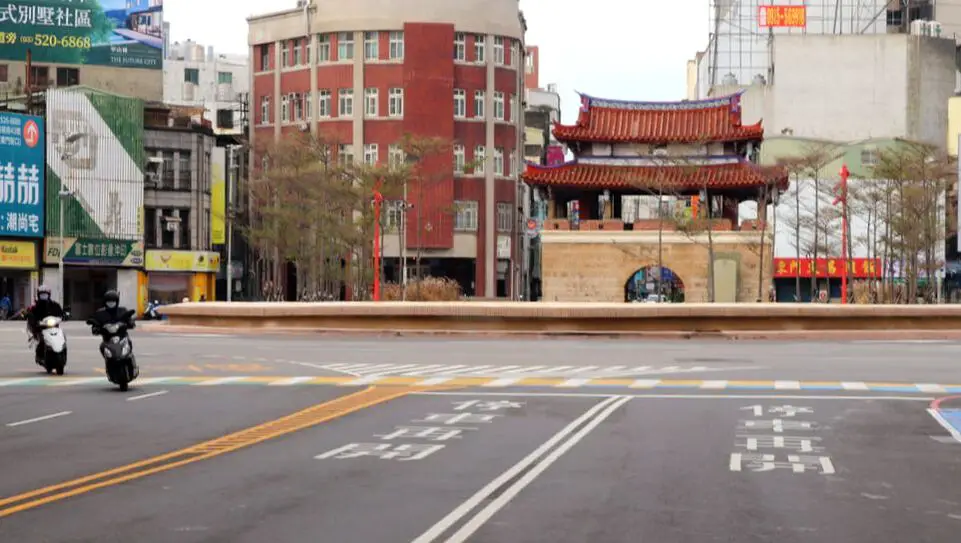
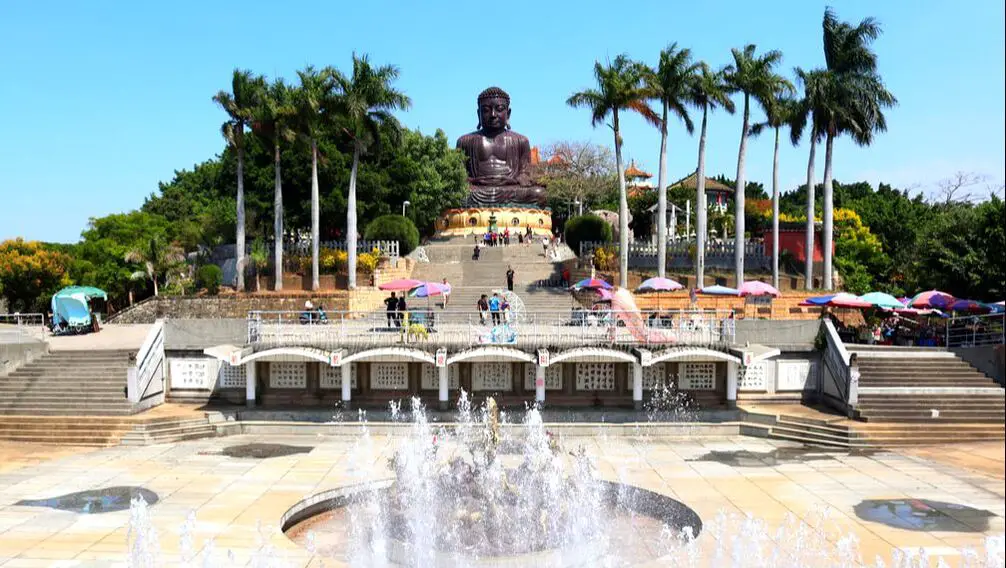
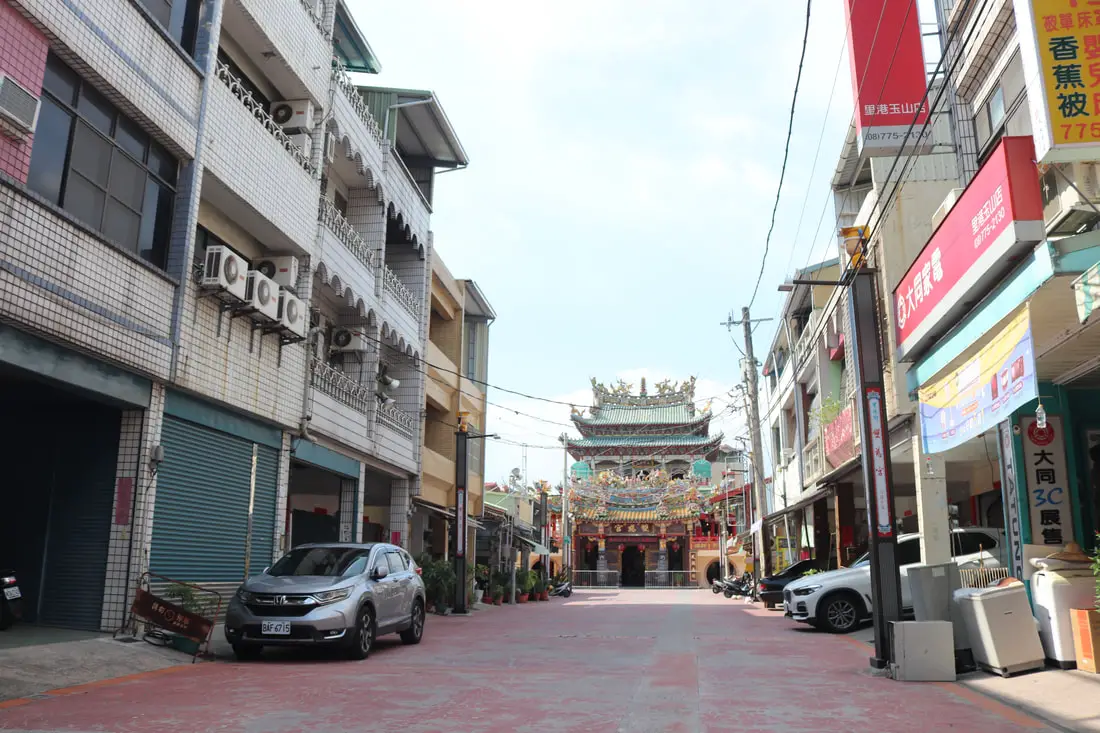
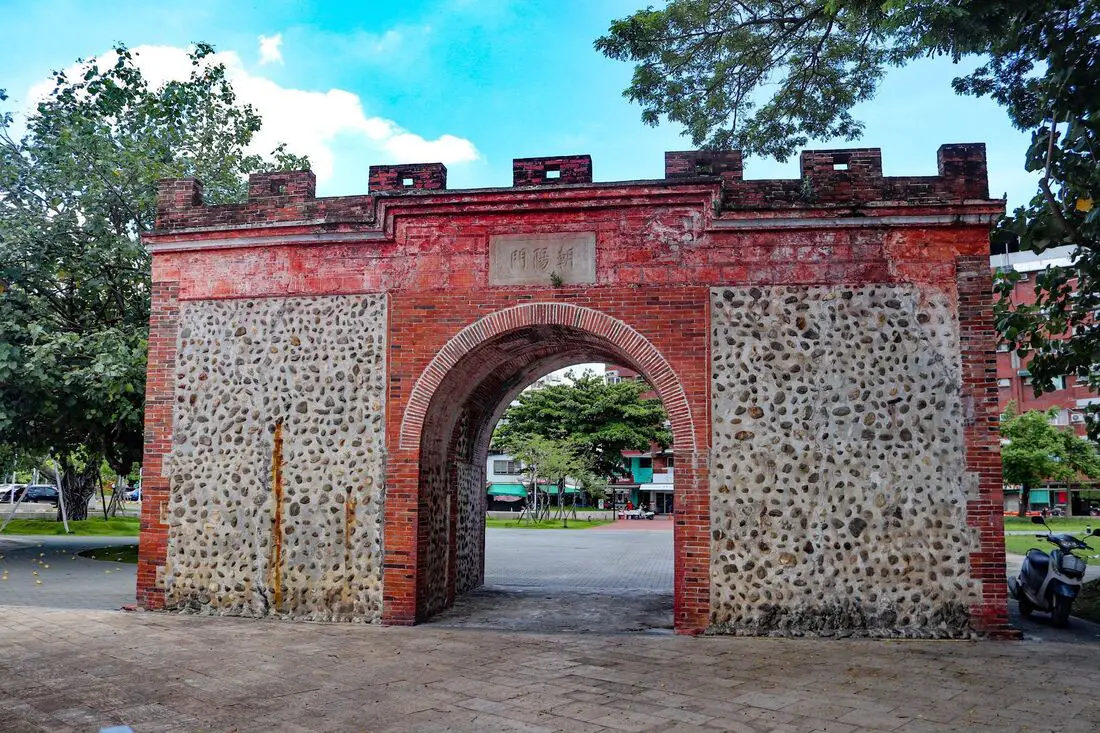
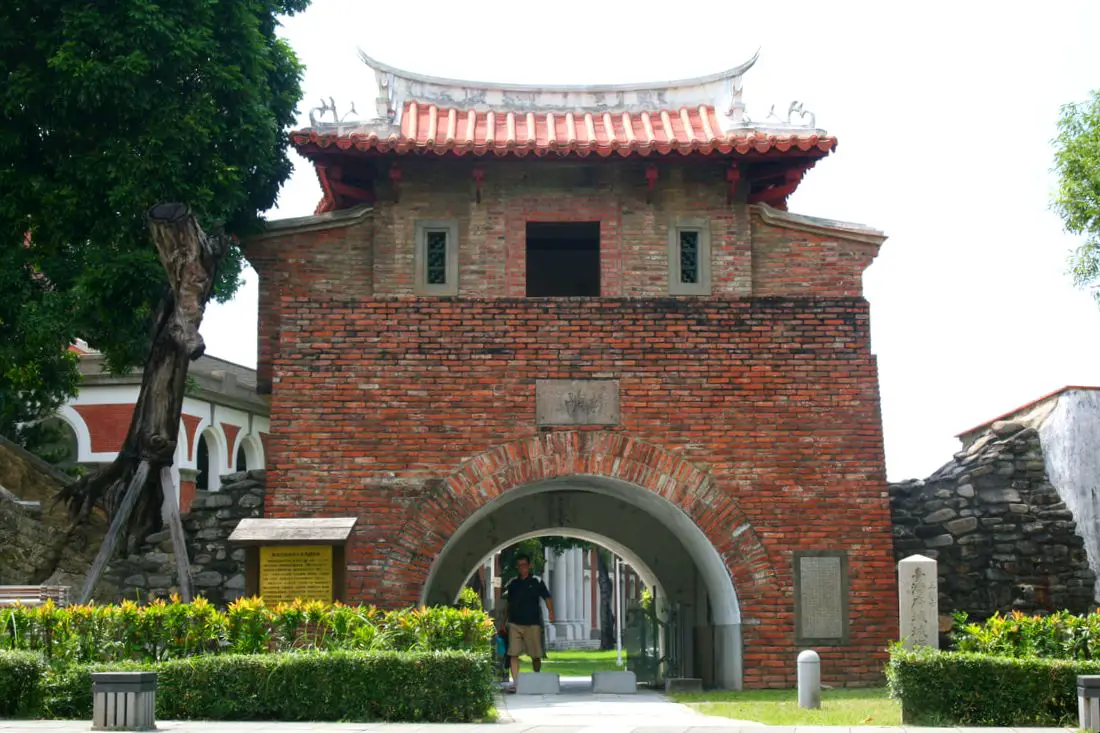
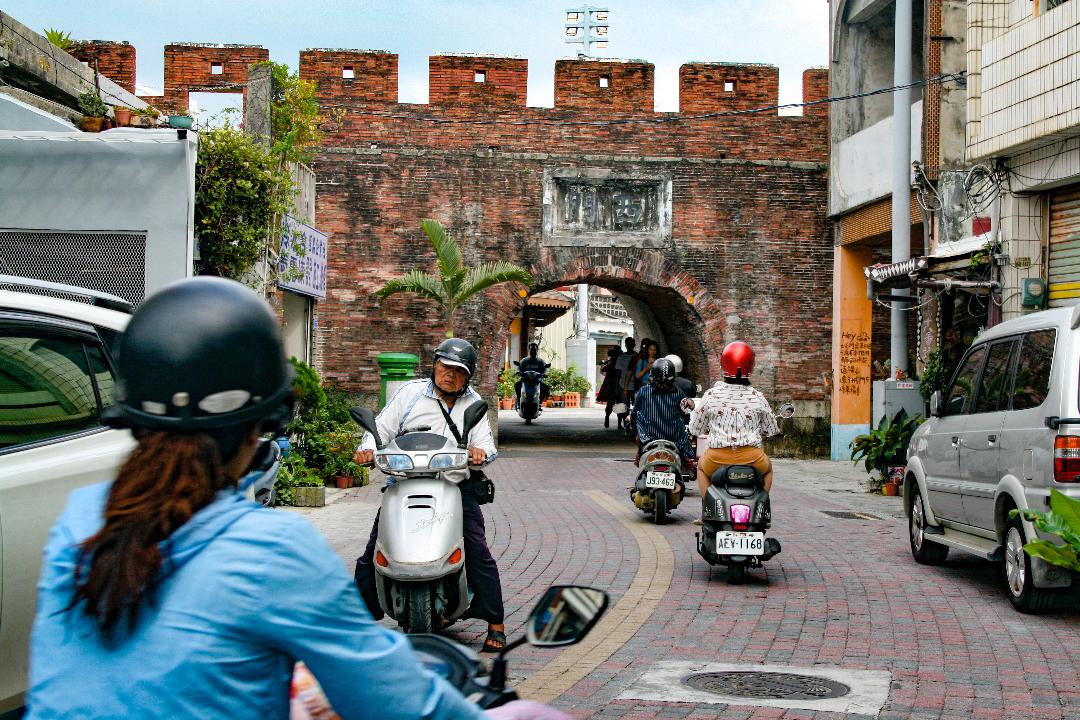
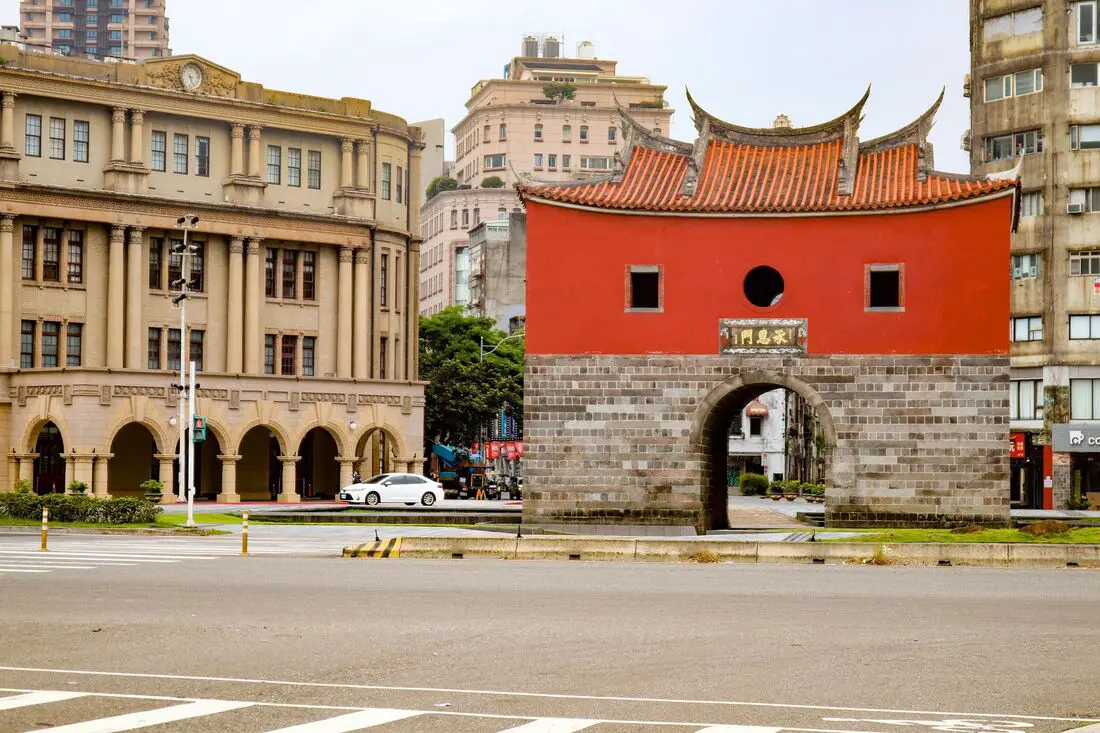
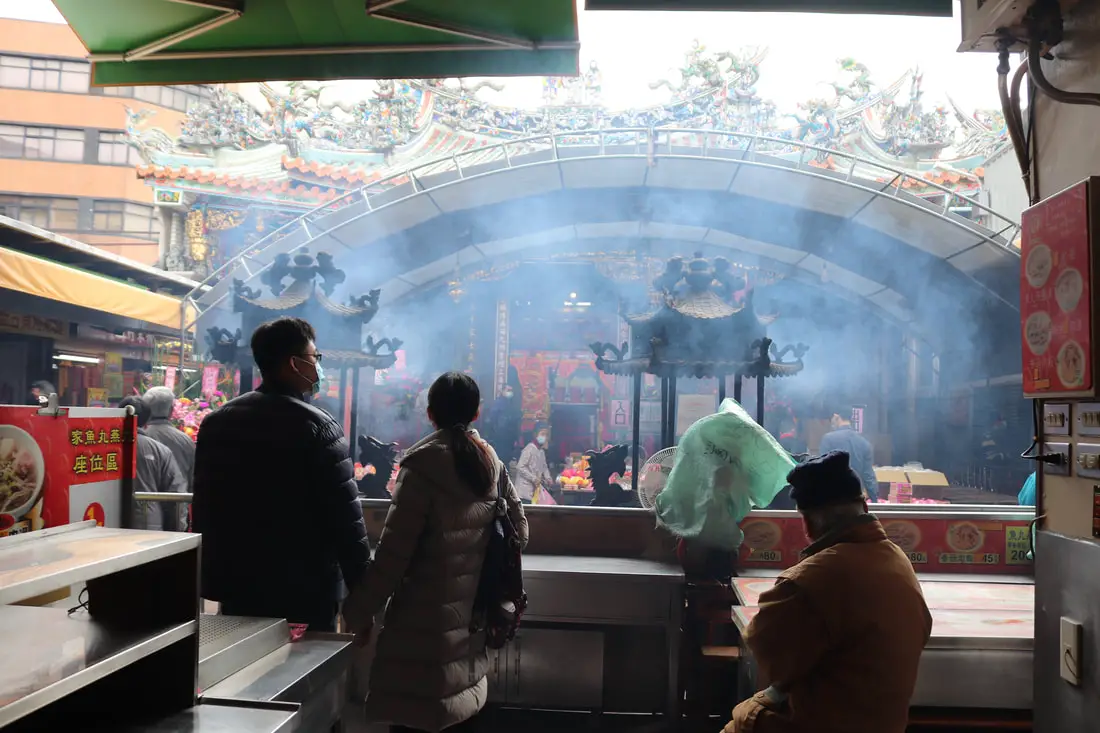

 RSS Feed
RSS Feed
